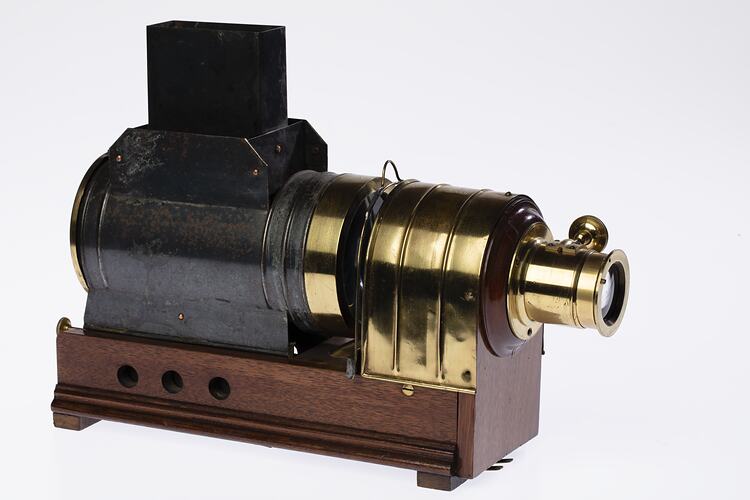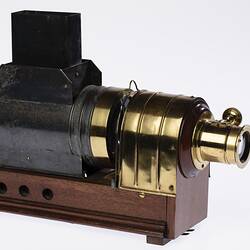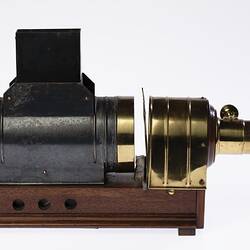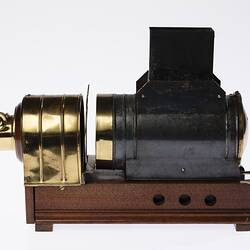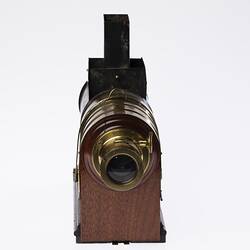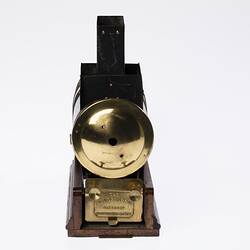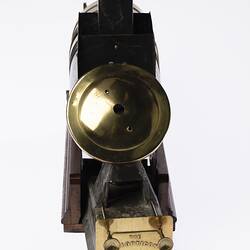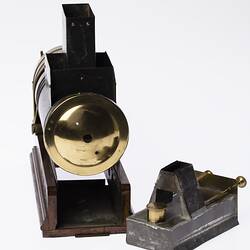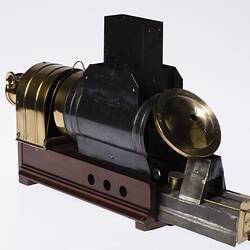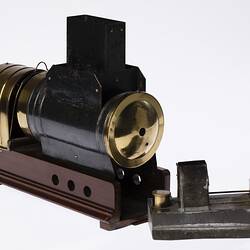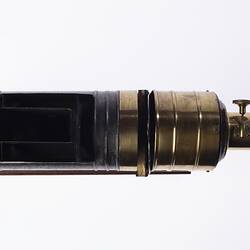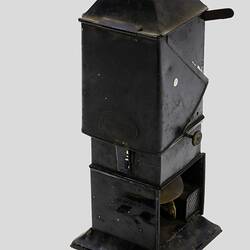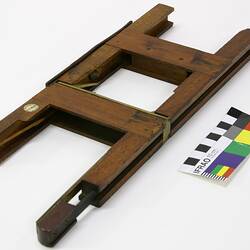Summary
Magic lantern projector used to project images. It used a double flat wick illuminant, fuelled probably by kerosene/paraffin. The heights of the wicks could be controlled in order to get the maximum light intensity for the images.
While the invention of the magic lantern is generally seen to be in the 17th century, its greatest popularity as an optical projector spans the late 18th Century to the early decades of the 20th Century. It was used both as a means of entertainment and education.
The name Sciopticon comes from the Greek words 'skia' (shadow) and 'opsis' (view or picture). This type of lantern was invented by Lorenzo J. Marcy in Philadelphia circa 1872. Walter B. Woodbury introduced it into Britain in 1873 after being impressed by its superior optical and illumination systems on a trip to the United States of America.
This lantern projector is part of the Francis Collection of pre-cinematic apparatus and ephemera, acquired by the Australian and Victorian Governments in 1975. David Francis was the curator of the National Film and Sound Archive of the British Film Institute as well as being a co-founder of the Museum of the Moving Image in London, which was operational between 1988 and 1999.
Physical Description
Irregular shaped object manufactured in metal, glass and wood, with some brass plating. The base of the projector is wood upon which sits the metal casing for the glass lens. There are three holes in each side of the wooden base for ventilation. The circular lens at the front of the object is encased in brass and the main body is also tubular. At the rear of the projector there is a circular opening which allows access to the illuminant chamber. This is covered by a brass flip lid with a small hole in the centre of it. Below the lid is a moveable bracket with two brass illuminant controls.
More Information
-
Collection Names
-
Collecting Areas
-
Acquisition Information
Loan & Subsequent Donation from Australian Film Institute (AFI), Mr David Francis, by Nov 1990
-
Inventor
Lorenzo J. Marcy - Marcy, 1340 Chestnut Street, Philadelphia, Pennsylvania, United States of America, 1872 or later
Marcy was an optician and an inventor and manufacturer of magic lanterns. -
Distributor
Walter B. Woodbury, England, Great Britain, circa 1872
Woodbury introduced the Sciopticon to Britain after visiting Marcy in United States. -
Collector
Mr David Francis, London, Middlesex, England, Great Britain, 1990
-
Inscriptions
The brass plaque on the rear of the object reads; 'THE/SCIOPTICON/PATENTED/WOODBURY & MARCY'
-
Classification
-
Category
-
Discipline
-
Type of item
-
Overall Dimensions
450 mm (Length), 137 mm (Width), 315 mm (Height), 3224 g (Weight)
-
References
[Book] Robinson, David, et al. 2001. Encyclopaedia of the Magic Lantern., 2001, 202, 273 Pages
[Book] Crompton, Dennis, et al. 1997. Servants of Light: The Book of the Lantern. 94., 1997, 20-21 Pages
-
Keywords
Lantern Projectors, Magic Lanterns, Pre-Cinema Moving Images, Projectors, Innovation & Design
